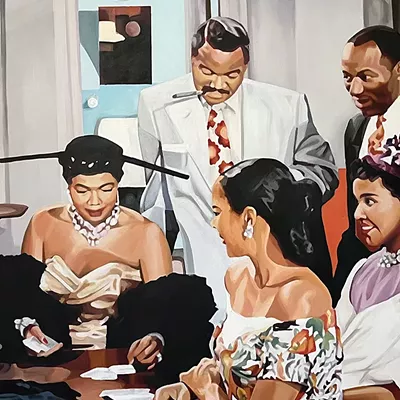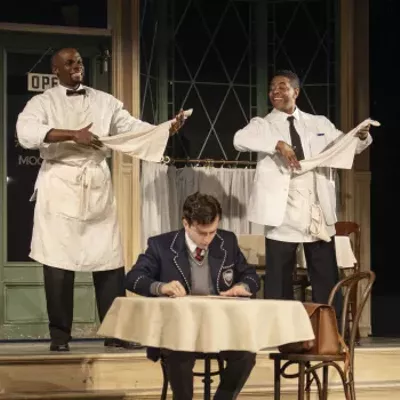A team of five women and two men are in two queues, holding hands and undulating back and forth as they wend their way to the far end of the dance floor. Choreographer Annie Bunker, the longtime artistic director of Orts Theatre of Dance, keeps a critical eye trained on them.
"This is like the double helix," she tells them. "You have to get from here to there as efficiently, as cleanly and as aesthetically pleasingly as possible."
The dancers are in the final week of rehearsals of "Neurosporatic," a complicated hourlong piece about genetics that combines Bunker's modern dance moves with her husband Chuck Koesters' electronic music and videos. Koesters also contributed what he calls the "flying dance apparatus" that will get the dancers off the floor. Its flying steel pipes and "swinging box of death," road-tested by the dancers in small bits over the last two years, will get a full-scale debut this weekend in three concerts titled Flights of Dance at the Pima College West Center for the Arts.
"The whole thing started with Genome, a book by Matt Ridley," Koesters recalls. "It explains the significance of the mapping of the human genome. I always knew all of life was connected in a spiritual way. Now I know it in a genetic way. ... I'd read this book in bed and go, 'Wow.' This piece is our reaction to these mind-blowing realizations."
The work has some across-the-floor movement--witness the double helix dance--but two-thirds of it takes place in the air, familiar territory for the Ortsers, who routinely gyrate on graceful trapezes. But the equipment for this piece is different, and potentially dangerous. In some cases, the dancers will dangle by their ankles at least 20 feet above the stage, all the while tangling with soaring metal pipes.
"There are pipes, a swinging box thing," Koesters says. "I was trying to build a mobile but I never got it to where it was safe. We nicknamed the pipes the 'swinging box of death' so the dancers would take care."
Koesters constructed the apparatus in a high-ceilinged back studio in the downtown Orts building; once it's set up on the proscenium stage at Pima it will be even higher.
"At first I didn't know if the dancers could interact with this in an artistic way," Koesters says. "But these pipes we're building are like another dancing partner--they act differently each time."
The second half of the concert features another Bunker premiere and a collaboration among Bunker, dancer extraordinaire Charles Thompson and Anton Smith. Their 20-minute-long "Sardine Blues" is set to the music of Miles Davis but it continues the theme of the construction site. It's full of boxes, and the performers dance with assorted large objects.
Bunker's latest piece, "Mourning Light," is danced to a tapestry of music by Polish composer Henryk Gorecki and a "video wall" of images by Koesters. Bunker describes it as an exploration of "both sides of the veil of waking and dreaming, desire and loss."










